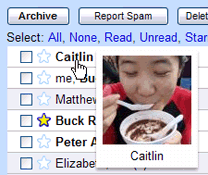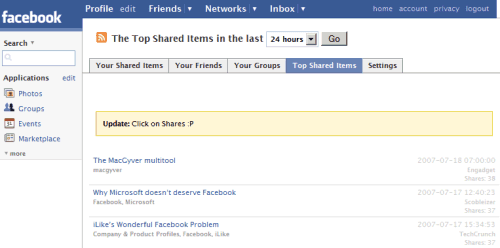
Google has an emerging social network and it doesn't use it. No, I don't talk about orkut or Socialstream (which was only sponsored by Google). Gmail, Google's most successful project if we leave search aside, has the potential of gathering information from all the other Google services that can be easily shared with your contacts.
The Past
Contacts started to become actual links in a social network when Gmail added avatars, last year. The chat made it possible to see the online presence of some of your contacts.
In April, iGoogle added a surprising feature: wizards that let you build simple gadgets and share them with your friends: greetings, photo albums, counting the days until a special event. A smart man made this comment: "This reminds me of a Facebook profile page. You can share your favorite photos/videos, put up your status, and add friends to your community so you can look at each other's pages. Google is sort of jumping into the social networking realm with this one...".
The Present
Most Google services have a way to share content: you can share your favorite videos, photo albums, documents, blog posts, but there's no central place to manage how you share content or a simple way to expose the shared content.
Google Reader has a feature that lets you share feed items, but you need to explicitly send to your friends the link to your shared items. Facebook's app for Google Reader generates a list of the top shared items by your friends, and that's a great way to discover new content filtered by the people you know.

Many Google services ask you to create a profile: Google Groups, Blogger, orkut, dodgeball, Google Co-op, but all these profiles are distinct and difficult to manage.
The Future
Gmail can easily create a graph of the interactions with your contacts based on how fast you answer to someone's message, how much do you write, the analysis of messages. Instead of a static profile you need to build for each of your contact, you could see his live profile that contains information aggregated from different services.
All this data could make you communicate more efficiently because Gmail could prioritize messages based on previous patterns and show more context about a contact when you type your message.
Gmail could also separate your contacts into different groups and let you share different data for each group. You'll share photos, documents, web sites, notes from a single place.
Creating a mail application centered on conversations instead of messages was a smart move from Google, but now Gmail should focus on those who create the conversations and try to make the conversations better. After all, conversation comes from the latin conversari ("to associate with"), so conversations could update the associations from Gmail's social graph. That's Gmail 2.0, the social Gmail.
No comments:
Post a Comment